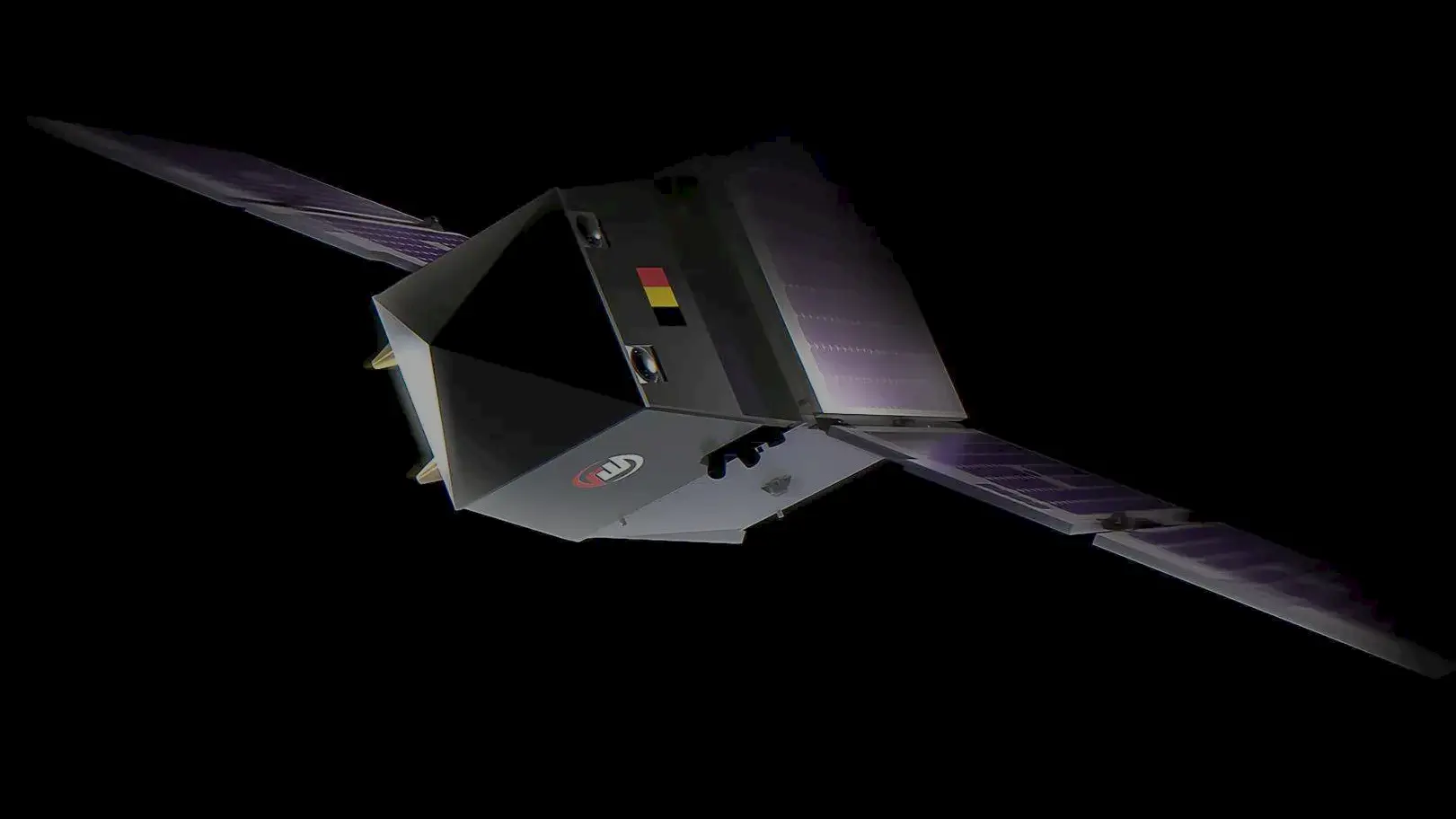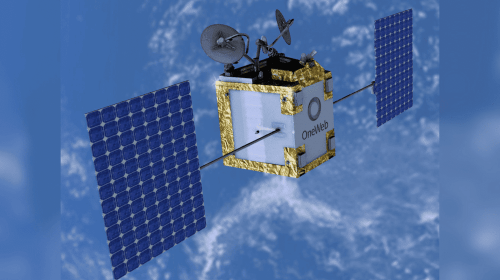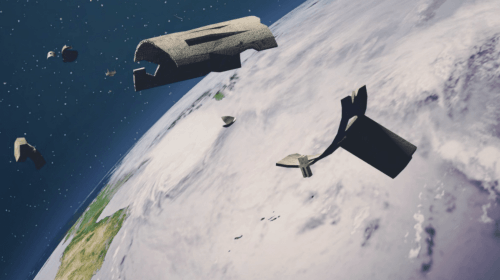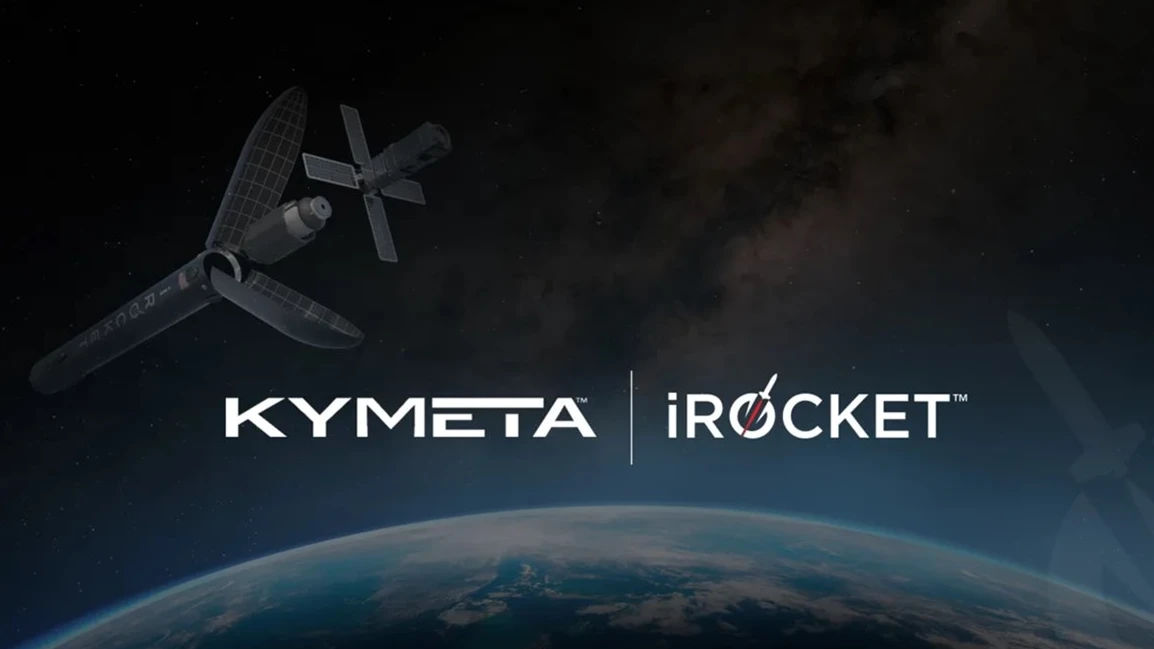Game-Changing Military Domain
Jun 30, 2025
With the development of space warfare, one of the most important questions arises: will Very Low Earth Orbit (VLEO) become the battleground that determines the future of military space operations, or are the existing hopes based on technological optimism that does not hold up to reality? The discussion of this sphere reveals the positive prospects and serious threats. Increasingly, military planners consider VLEO, operating between 200 and 450 kilometers above the surface of the earth, as having the potential to be transformational to military operations. Space dominance has taken a new focus, with adversaries rapidly advancing Anti-Satellite (ASAT) weapons, both kinetic and non-kinetic, including cyber warfare and directed energy attacks, that can cripple key assets within minutes. Only one hit can cause cascading debris fields that make whole proliferated orbital layers unusable and turn global security upside down.
 3D rendering image of Redwire’s Phantom european VLEO platform. Credit: Redwire
3D rendering image of Redwire’s Phantom european VLEO platform. Credit: Redwire
The low-earth orbit of VLEO satellites allows near-zero latency communications, enabling near-real-time command and control, which is essential to missile defense, battlefield coordination, and secure Intelligence, Surveillance and Reconnaissance. These satellites are harder to detect, track and target due to rapid decay of the orbits and unpredictable motion of the debris at VLEO, increasing survivability in contested space. The vision has been projected well in the market. Juniper Research estimates that the market will expand to the level of 220 billion USD in 2027, compared to 17 billion in 2024. In VLEO, the operational satellites are projected to increase to over 620 by 2030, a drastic increase compared to the few assets scheduled to be put into operation in 2025. In addition to tactical advantages, VLEO is a cost-efficient alternative to conventional satellite architectures, and propulsion, and autonomous navigation advances have increased the ability to deploy, replace, and maneuver.
Technical Barriers and Operational Constraints
Operating in VLEO presents formidable engineering challenges. Satellites experience significant atmospheric drag, which accelerates orbital decay and demands frequent propulsion corrections to maintain orbit. Their shorter lifespans require a steady stream of replacements unless highly efficient propulsion and launch systems are developed. Atmospheric density at these altitudes imposes thermal stress, making advanced heat management systems and resistant materials essential. Existing satellite models, designed for higher orbits, may need full redesigns to survive in VLEO, potentially doubling development costs and delaying deployment schedules tenfold.
 Artist’s rendering of Constellation Technologies & Operations VLEO satellite. Credit: Constellation Technologies & Operations
Artist’s rendering of Constellation Technologies & Operations VLEO satellite. Credit: Constellation Technologies & Operations
Another major limitation is launch infrastructure. Unlike LEO, VLEO lacks dedicated launch systems. One option is to adapt sounding rockets into low-cost, reusable launchers, though this will need new resources and incentives. Small orbital launch vehicles show promise if sufficient investment secures dedicated missions. VLEO congestion and collision risks demand robust space traffic management. While natural orbital decay enables self-cleaning, sustainability still requires active debris mitigation and international coordination. Additionally, VLEO’s velocity fluctuations complicate tracking and prediction, making collision avoidance even more difficult than in higher orbits.
Investment Requirements and Coordination Challenges
To gain leadership in the VLEO area, special investment strategies will be needed. Propulsion and materials that allow long-term operations in this challenging space environment will need to be invested in, as well as large investment needs to be made in development of launch vehicles that solely deliver payloads to this region. The technological gap between the current capabilities and the VLEO demands implies that the breakthrough innovations in the electric propulsion systems, and materials resistant to the atmosphere, will be required. Also, the creation of standardized interfaces and modular satellite designs may decrease the cost of deployment and speed up the replacement rates when the satellites reach end-of-life.
 Redwire SabreSat VLEO platform promo. Credit: Redwire
Redwire SabreSat VLEO platform promo. Credit: Redwire
But, with appropriate foresight and space traffic management procedures in place to control the traffic, including assets that fall down through higher orbits to VLEO as a part of their normal disposal process, the merits of operating in VLEO would far outweigh the drawbacks. It will be important to invest more in on-orbit active debris modeling and mitigation to make VLEO a viable long-term operating environment. Development needs to be done through industry and government, and promoting the public-private partnerships will be critical to success. The coordination between countries will be especially vital when several countries develop VLEO simultaneously, which may lead to disputes in orbit slots and operating rules.
Strategic Opportunity and Long-term Viability
The operational advantages of Very Low Earth Orbit extend beyond immediate tactical benefits, offering nations the opportunity to establish sustained space superiority in critical mission areas essential for modern defense strategies and global security across multiple domains and theaters of operation. The unique characteristics of this orbital regime provide enhanced survivability against conventional anti-satellite threats while maintaining superior data collection and communication capabilities crucial for real-time intelligence and decision-making processes that shape battlefield outcomes. Nations that successfully master VLEO operations will gain significant advantages in space situational awareness, enabling them to monitor and respond to threats more effectively than competitors operating in higher orbits, thus maintaining strategic dominance in increasingly contested environments. The integration of VLEO assets with existing space architectures creates redundant, resilient networks that can continue operating even under sustained attack, ensuring uninterrupted operational capabilities during conflicts and crises, and providing a reliable backbone for coordinated military and civilian space activities.
Future developments in this orbital sphere will determine the balance of space power for decades to come, and strategic advantage will belong to those countries that can effectively reconcile technological challenges with operational advantages. The path forward will require overcoming significant propulsion limitations, developing dedicated launch infrastructure, and implementing sophisticated orbital traffic management systems to determine whether Very Low Earth Orbit (VLEO) becomes the defining standard for military space operations or remains a specialized niche capability. The window for gaining dominance in this critical orbital regime is rapidly closing as global competitors accelerate their space capabilities development programs with increasing urgency and national prioritization. The fundamental challenge of VLEO operations is that long-term success will demand sustained investment over multiple years, requiring countries to develop not only the advanced technology necessary to operate in this demanding orbital environment, but also the specialized operational expertise and institutional knowledge required to maintain persistent operations in this challenging space domain.





